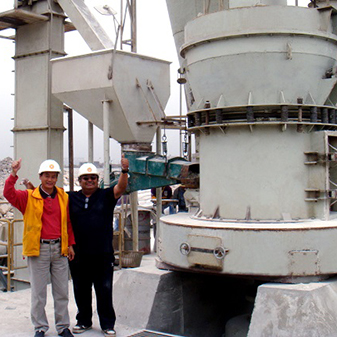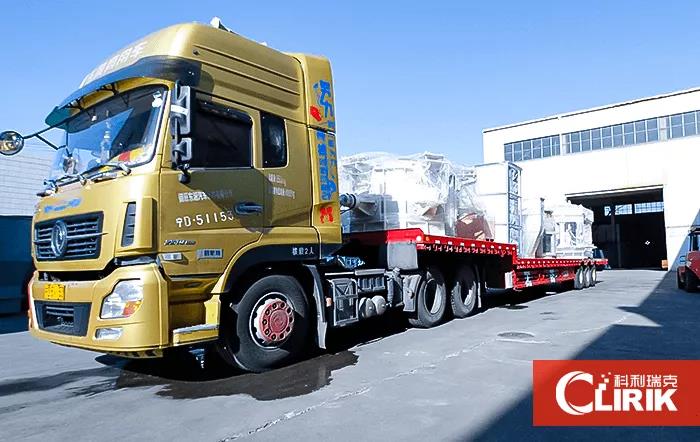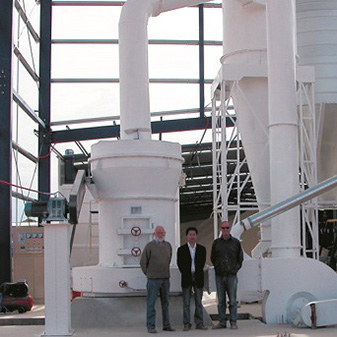What is kaolin?
Kaolin is a non-metallic mineral, a kind of clay and clay rock dominated by kaolinite clay minerals. Because it is white and delicate, it is also called white cloud soil. The pure kaolin is white, fine, soft and soft, and has good plasticity and fire resistance and other physical and chemical properties. Its mineral composition is mainly composed of kaolinite, halloysite, hydromica, illite, montmorillonite, quartz, feldspar and other minerals. Kaolin has a wide range of uses. Kaolin is mainly used in the ceramic industry, refractory material industry, chemical industry and light industry. It also plays a unique role in the aerospace industry.

Kaolin ultrafine crushing technology
Particle size and whiteness are two important indicators to measure the quality of kaolin products. The application of high-tech fields generally requires the particle size of kaolin particles to be particularly small or even in the nanometer range. With the quantitative change of the kaolin particle size, under certain conditions, it will cause the qualitative change of the particle properties. For kaolin particles, the particle size becomes smaller and the specific surface area also increases significantly, resulting in a series of novel properties. The so-called "nano effect".
At present, the preparation methods of ultra-fine kaolin include mechanical pulverization (ultra fine grinding mill), intercalation, chemical synthesis, etc., of which mechanical pulverization is the most widely used.
1. Mechanical crushing method
The mechanical pulverization method for preparing ultrafine kaolin has a simple process and high efficiency, and is one of the more commonly used methods. The prepared ultrafine kaolin has been applied in many industries, and can be divided into dry and wet methods according to the processing method.
(1) Dry ultrafine pulverization of kaolin
The dry method is mostly used for ultrafine pulverization of hard kaolin or kaolin, especially for directly processing kaolinite into ultrafine powder that meets user requirements. At present, the product fineness that can be achieved by domestic dry production is generally d90≤10μm, that is, the final product is about 1250 mesh.
Dry ultra fine grinding mill equipment mostly uses jet mills, cyclone self-mills, high-speed mechanical impact ultra-fine pulverizers, vibration mills and vertical mills. The impact mill and jet mill can be used in series to carry out multi-stage ultra-fine grinding to prepare ultra-fine kaolin.

(2) Kaolin wet superfine crushing
Wet superfine pulverization is mostly used for soft and sandy kaolin for de-sanding and superfine pulverization after impurity removal, especially for processing paint-grade kaolin products with d80≤2μm or d90≤2μm. It is also industrially used hard kaolin. Or kaolin processing d80≤2μm or d90≤2μm coating grade kaolin products must be used in the ultrafine grinding method.
Wet grinding is to use the relative movement of the grinding media to produce shear, impact and abrasion effects on the kaolin particles, causing them to peel off into thin flakes along the interlayer. Commonly used equipment is grinding and peeling machine, stirring ball mill, sand mill and so on.
2. Intercalation-peeling method
The intercalation method is currently the most promising and effective method for preparing nano-kaolin. The main chemical component of kaolin. The structural unit of kaolin is combined by the formation of a hydrogen bond between the hydroxyl group of a layer of aluminum oxide octahedron and the oxygen atom of a layer of silicon oxygen tetrahedron. Some small molecules can destroy the hydrogen between the layers. key. It is inserted between the layers to increase the distance between the layers to make them peel off. This method is also called intercalation-peeling method.
The chemical additives commonly used in the intercalation method are potassium acetate, dimethyl sulfoxide, urea, formamide, hydrazine hydrate and its extensions. The intercalation compound is heated, ultrasonically treated, washed with water, or combined with the action of chemical additives under microwave conditions, and a strong physical and chemical reaction occurs, which causes the interlayer force of kaolin to be destroyed or weakened to a certain extent, and finally undergo grinding in turn , Washing, drying and other techniques to obtain nano kaolin products.
3. Chemical synthesis
The chemical synthesis method uses sodium metaaluminate, an alkaline eluate of bauxite, and acidic silica sol, which is the acidification and de-sodium product of sodium chloride, as raw materials to obtain ultrafine synthetic kaolin through a series of methods. Its high purity, suspension stability, light scattering, and other properties are excellent, but its synthesis cost is relatively high.
What are the performance and advantages of the kaolin ultra fine grinding mill?
At present, ultra fine grinding mills are mainly suitable for the processing of ore materials, which are widely used in the fields of chemical, ceramics, and light industry. Therefore, such a demanding market naturally needs a set of processing equipment to assist in increasing production. At the same time, it reduces the energy consumption of the machine itself and at the same time enhances the performance of the mill. In this way, the output will be increased, the efficiency will be doubled, and at the same time, the wear degree of the wearing parts will be reduced, and the service life of the wearing parts will be greatly increased.
Kaolin ultra fine powder grinder is a simple-to-operate milling equipment with comprehensive mechanical crushing performance such as rolling and milling. It can produce 300-3000 mesh powder. It has a small footprint, low energy consumption, convenient maintenance, with high cost-effective. Kaolin ultra fine grinding mill is a scientific and ideal milling equipment.
What is the price of the superfine mill?
CLIRIK introduces new milling technology and concepts, constantly improves product innovation design, and develops a new generation of Raymond mills, vertical roller mills, ultra fine grinding mills and other equipment, which are used in the production of potash feldspar powder, marble powder, limestone powder, etc. . According to the different output and fineness requirements of customers, the price of the equipment configured is different. CLIRIK is scientifically formulated according to the grinding requirements put forward by a large number of customers, such as fineness, capacity, production area, finished product application area, etc. Develop an important basis for the selection of machine science. If you want to know more about which milling equipment is suitable for your needs, please feel free to contact us!



